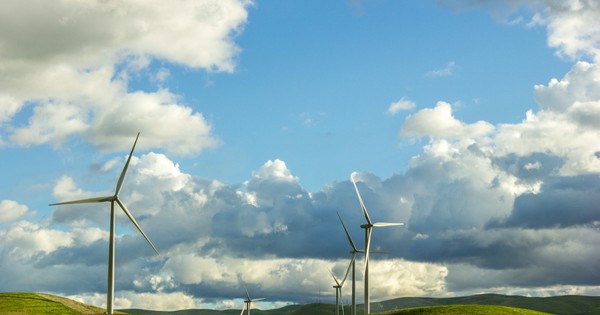Post-pandemic climate strategies are badly needed

The World Meteorological Organization said governments must fight climate change with the same determination as they did COVID-19.
Global greenhouse gas emissions have dropped significantly during the current coronavirus pandemic, but the World Meteorological Organization (WMO) wants people to realize that this drop will not prevent climate change from happening. In a statement issued on Earth Day, WMO urged governments to consider climate strategies when creating recovery plans. Via Reuters:
“COVID-19 may result in a temporary reduction in greenhouse gas emissions, but it is not a substitute for sustained climate action. We need to show the same determination and unity against climate change as against COVID-19.”
The pandemic might cause emissions to drop as low as they were after World World II; however, “past economic recoveries had been associated with even higher emissions growth than before the crises,” as people rush out to start shopping, travelling, and producing goods as they did before the crisis hit.
What’s needed is wise governmental guidance and a willingness on the part of leaders to construct green recovery plans that are perhaps slightly slower in getting the shattered economy up off the ground, but take into consideration the even bigger crisis that looms over us, climate change. In the words of Peter Betts, a former climate negotiator for Britain and the European Union,
“With something like climate change we know that it’s coming and know that there are ways we can prepare for it that would be relatively low cost. And what we’re seeing with this pandemic is that if you wait until the crisis hits, the costs are much greater.”
So far, Reuters has reported that governments in the U.S., Japan, India, China, and certain parts of Europe are most concerned with “staunching the damage to industry, preserving jobs or trying to avoid corporate failures.” These are legitimate, serious issues, but leaders should look to ministers from France and Germany for examples of how the pandemic recovery can be a launching point for a new way of doing business and living life.
What could this green post-pandemic world look like?
Fellow TreeHugger writer Lloyd Alter has written a great series of articles on what main streets and cities could look like, how we should rethink food production and distribution system, how buildings can be built to slow the spread of disease, why transportation networks will be redesigned and bicycles given a chance to shine, especially as people continue to avoid mass transit.
I, too, have written about why we can’t forget about local farmers after the pandemic and should fight for a more localized, secure food network. I want airlines to be forced to embrace climate measures, such as Austrian Airlines being told state aid is conditional upon reducing short-haul flights. (Perhaps high-speed rail could fill that gap?) I’d love for town streets to stay as quiet and calm as they have been of late, perfect for my kids to play outside safely; this could take the form of better biking and walking networks. I wonder if weeks of enforced frugality will shift people’s attitudes toward consumerism, make them realize it’s possible to make do with less, and that slowing down one’s life can be deeply satisfying and healthy in many ways.
It remains to be seen how the world will react in post-pandemic times, but now is the time to dream, envision, demand, and mobilize for what we want. This is a unique opportunity, for the world to have been turned off temporarily and then restarted. And it’s up to us to communicate to government officials and local community leaders about the new shape we’d like it to take.
The World Meteorological Organization said governments must fight climate change with the same determination as they did COVID-19.
Please enable JavaScript to view the comments.







